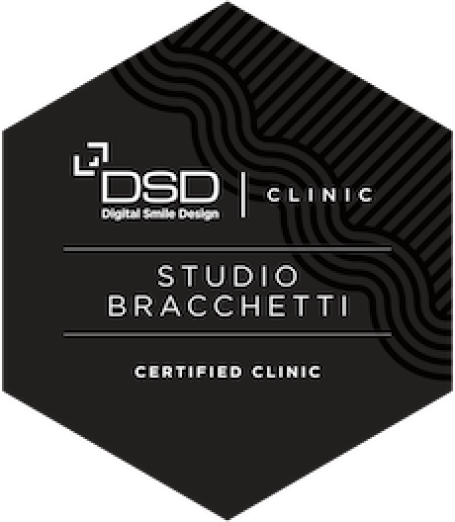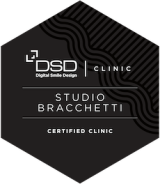Amalgam Removal
Removal of amalgam is a procedure that is increasingly necessary and required.
This is a mandatory operation in some cases, such as chipping or carious infiltrations, however the number of people who decide to undergo this surgery for aesthetic reasons or to avoid the effects caused by the toxicity of mercury is growing. / p>
The Bracchetti Dental Clinic applies strict protocols and all necessary precautions to protect the patient and whoever performs the surgery.
However, first of all it is necessary to explain a very important concept: there are two types of potential contamination: the first is contamination to the patient's organism and the other is contamination to the external environment.
The first has never been scientifically and objectively proven, despite the fact that in the last hundred years all the universities in the world have developed research protocols to try to correlate the presence of mercury to a long series of symptoms that patients present.
Despite this, it is certainly a good idea to avoid using this material due to the potential toxicity of mercury.
The second, on the other hand, is absolutely proven and occurs when the mercury, following removal, is dispersed into the environment.
To avoid both of these risks the Bracchetti Dental Clinic performs the removal of the amalgams in complete safety, isolating the tooth with a rubber dam and using sophisticated filters applied to the suction system of the study in order to collect and block any residual mercury, which is then disposed of as special waste following strict protocols.
Introduction: what are dental amalgams?
Once the caries have been identified and removed, the dentist must fill the cavities present on the tooth: this is a necessary operation to protect the tooth (also from the presence of bacteria) and also has a functional and aesthetic value, allowing for the restoration of the original appearance and anatomy of the tooth. Different materials are used to make the fillings, but until recently a particular compound was used, the so-called amalgam. This material was composed of a mixture of substances: it was a metal alloy with tin, copper, silver, zinc and above all mercury.
It was a solution that had several advantages: first of all it guaranteed a lasting result over time, and the soft material was easy to work with (therefore it allowed to reduce intervention times) and very economical. But there is one thing: mercury is toxic. Until recently, there were not enough studies to demonstrate the danger of this heavy metal towards the environment in which we live, which was therefore used without knowing the negative effects it could have on health. Mercury was not only used in dental amalgams: there were more or less substantial traces of it also in paints, batteries, herbicides, extraction processes, dyes and so on.
Why remove amalgams
The "discovery" of its toxicity has given way to a series of regulatory interventions: specific disposal procedures have been set up and bans on the use of mercury have been established. For example today it is forbidden to use it in light bulbs and thermometers. With regard to the dentistry, the European Union has established that for some categories of patients the old amalgams can no longer be used for fillings, so they must be replaced with alternative, safer and biocompatible materials.
Many professionals have decided not to use amalgam in other categories of patients anymore either. The toxic effect of mercury is dose dependent. It is true that the amalgams used by dentists release very low concentrations, but they are added to a scenario in which heavy metals are already abundantly present in the environment, especially due to pollution.
In some cases, the removal of amalgam is practically mandatory. It should be done, for example, when dental needs arise (such as infiltrations, local pathologies, fracture of fillings and so on). But the number of removal requests is growing for the reasons we explained above.
The safe removal of amalgam: the procedure
To avoid the risks associated with mercury toxicity, many patients turn to Dr. Bracchetti's office in Milan to replace the amalgam of old fillings with more modern and safe materials. The replacement is often required also for aesthetic reasons: the old amalgam does not have a particularly pleasant appearance, while the new fillings manage to blend perfectly into the natural color of the teeth.
The removal of amalgam is a process that must take place following particular precautions to ensure the safety of the patient and the professional who performs the operation. The main tool is a micromotor drill with special tips used during the removal operation which is important for dissolving of mercury microparticles. To avoid ingesting or inhaling them, all the necessary precautions are taken to make a safe removal .
The first step, of course, is represented by the diagnosis: after a radiological and clinical evaluation you can decide how to proceed, aware of the of the procedure, the intervention to be performed, and the potential risks . The amalgam removal session usually begins with indolent local anesthesia. Meanwhile, the professional has prepared all the necessary equipment and has prepared the various safety measures. First, the rubber dam is needed to isolate the tooth from the rest of the patient's body, and then a suction system with specific filters is used to immediately remove the particles and vapors caused by removal and prevent them from being dispersed into the environment through the waste water.
The latex dam is used to isolate the area to be treated. The patient is protected with specific goggles, while the operator wears all the necessary safety devices. The operation, as mentioned, is performed using the drill, with a low number of revolutions and with special cutters that reduce the dispersion of vaporization to a minimum. Using leverage tools, the dentist removes the amalgam with the fewest possible fragments. Once the amalgam has been removed, the next step is the reconstruction of the tooth. This is done using better quality materials in terms of biocompatibility, mechanical, and aesthetic properties.
If you would like to make an appointment at the Bracchetti Dental Clinic in Milan please click the Request form - Or you can write us on whatsapp and if you want to talk to the secretary you can do so easily by calling the office by clicking here
















